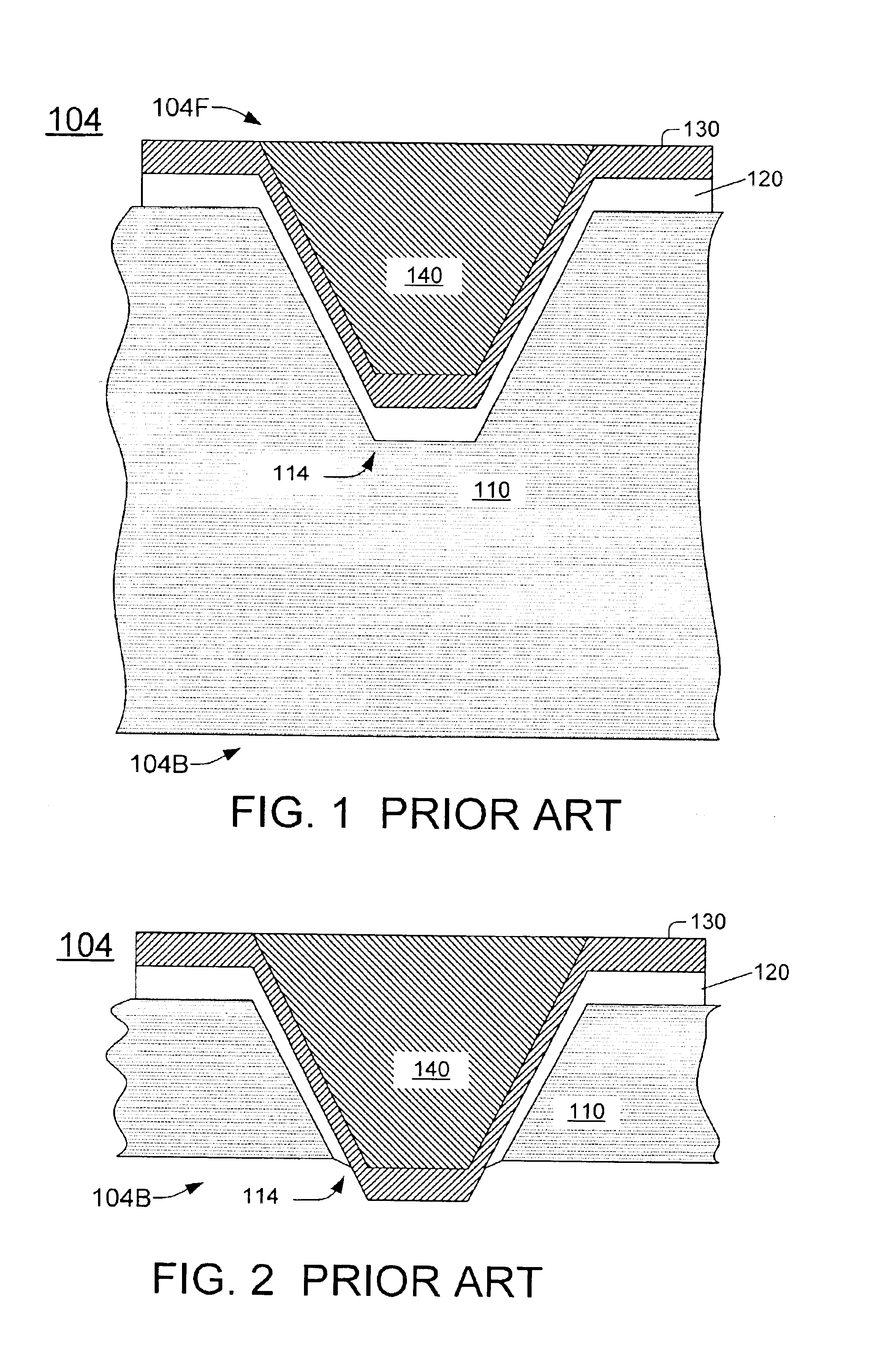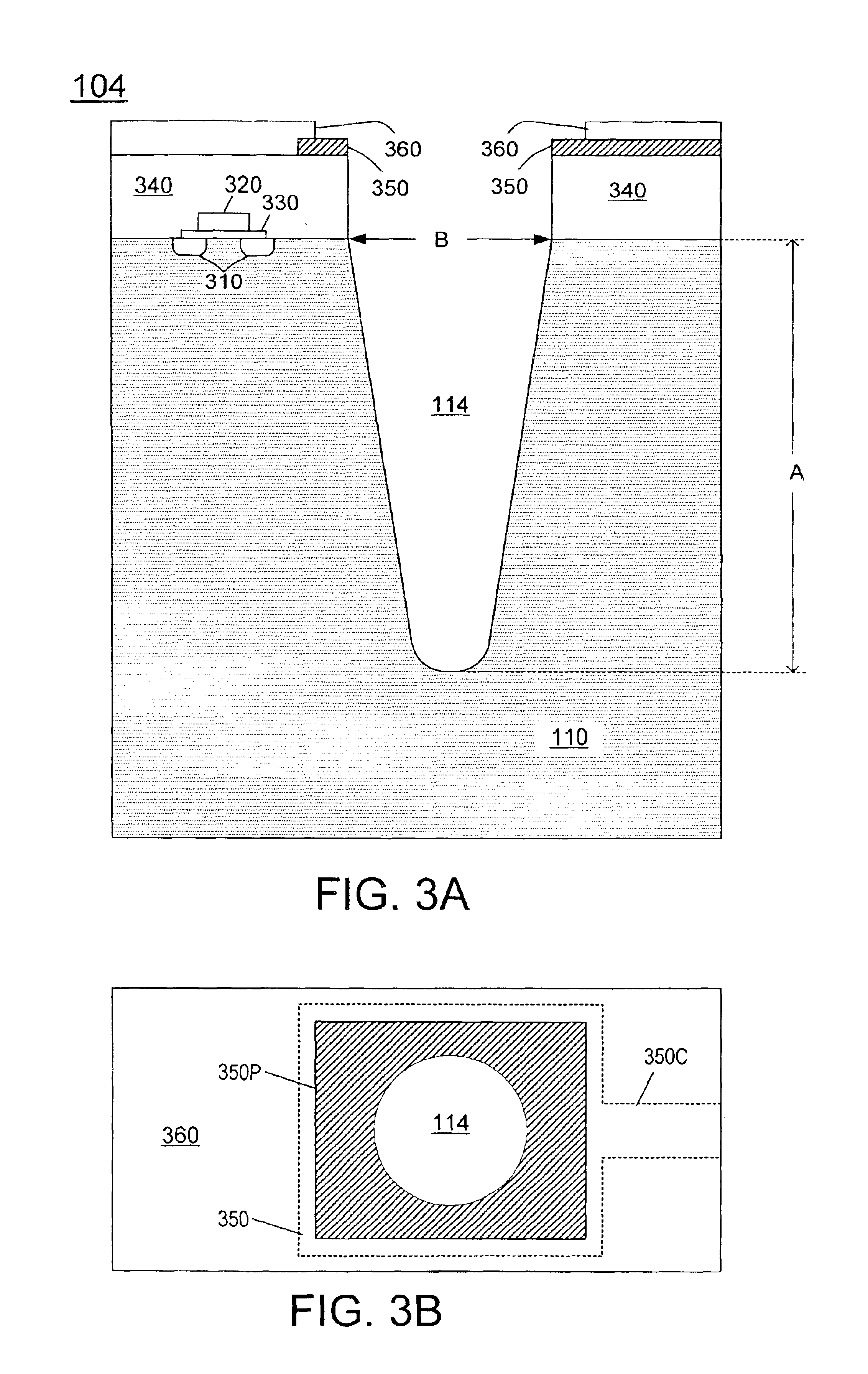Electroplating and electroless plating of conductive materials into openings, and structures obtained thereby
a technology of electroless plating and conductive materials, which is applied in the direction of electrical equipment, semiconductor devices, semiconductor/solid-state device details, etc., can solve the problems of void formation in the electroplated metal and does not allow the electroplating to be initiated, and achieves low tool cost and high throughput
- Summary
- Abstract
- Description
- Claims
- Application Information
AI Technical Summary
Benefits of technology
Problems solved by technology
Method used
Image
Examples
Embodiment Construction
[0021]FIG. 3A illustrates a cross section of a wafer 104. The wafer includes a semiconductor substrate 110. For illustration, it will be assumed that substrate 110 is made of silicon, although other semiconductor materials can be used. The invention is not limited to any materials, dimensions, or other details, but is defined by the appended claims.
[0022]Transistors, diodes, resistors, capacitors, interconnect lines, or other devices and circuits, or portions thereof, may have been formed in wafer 104. FIG. 3A shows a MOS transistor. Its source / drain regions 310 are doped regions formed in the top surface of substrate 110. Gate 320 is formed over the channel region located between the source / drain regions. Dielectric 330 insulates the gate from the channel region. A layer 340, which includes dielectric and conductive layers, has been formed over the substrate 110 and over the transistor. Conductive layer 350 (e.g. aluminum) has been formed over the layer 340 and patterned to provide...
PUM
 Login to View More
Login to View More Abstract
Description
Claims
Application Information
 Login to View More
Login to View More - R&D
- Intellectual Property
- Life Sciences
- Materials
- Tech Scout
- Unparalleled Data Quality
- Higher Quality Content
- 60% Fewer Hallucinations
Browse by: Latest US Patents, China's latest patents, Technical Efficacy Thesaurus, Application Domain, Technology Topic, Popular Technical Reports.
© 2025 PatSnap. All rights reserved.Legal|Privacy policy|Modern Slavery Act Transparency Statement|Sitemap|About US| Contact US: help@patsnap.com



